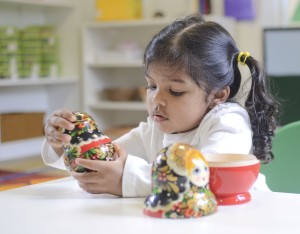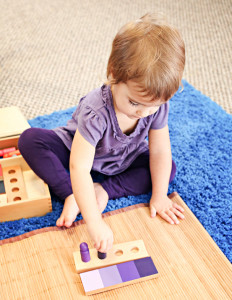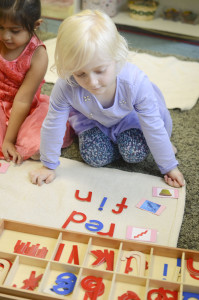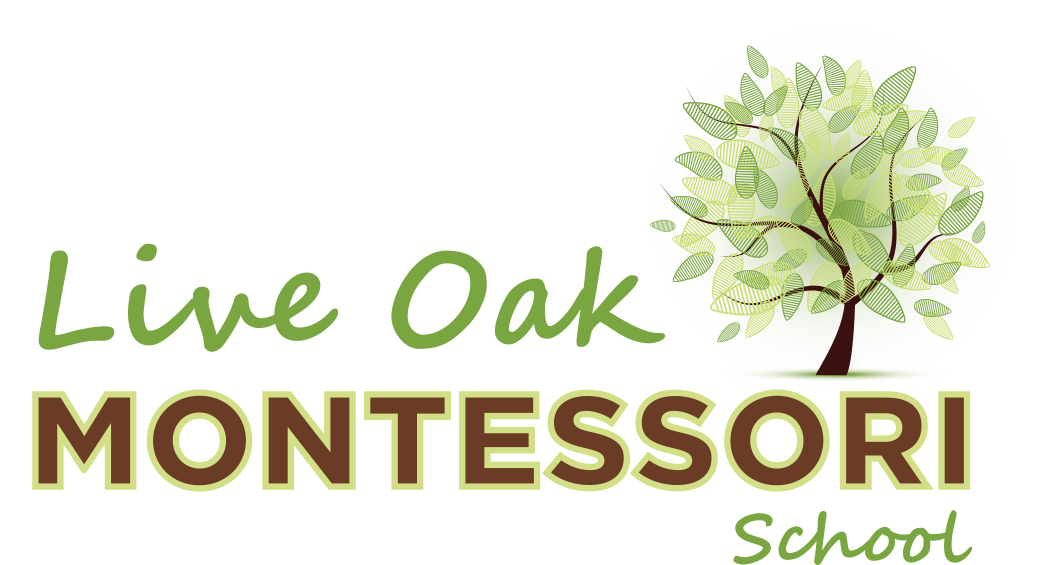Our Phone # has Changed. Our New Number is 407-784-4249.
Overview of our Programs
“Only through freedom and environmental experience is it practically possible for human development to occur.”
M. Montessori
 Young children have an acute mental absorption that enables them to learn at rapid pace from birth to six years of age. During this time, Dr. Maria Montessori also observed that children experience what she calls “Sensitive Periods” in their development. These are periods of special sensitivity when the child is fascinated by certain objects in his or her environment. These periods occur almost universally for all children at roughly the same age and provide optimal development of that particular skill or knowledge.
Young children have an acute mental absorption that enables them to learn at rapid pace from birth to six years of age. During this time, Dr. Maria Montessori also observed that children experience what she calls “Sensitive Periods” in their development. These are periods of special sensitivity when the child is fascinated by certain objects in his or her environment. These periods occur almost universally for all children at roughly the same age and provide optimal development of that particular skill or knowledge.
The Montessori Prepared Environment serves to bring this world to the child through carefully selected materials ideal for obtaining new knowledge and skills. Assorted items including globes, maps, songs, land forms, collections of pictures of life in different cultures, etc., is offered, with the aim of helping children to grow as individuals appreciating the larger context of their world. There are six main areas in the Montessori Prepared Environment: Practical Life, Sensorial, Math, Language, Culture and Art.
Practical Life
The Practical Life component of the Montessori approach is the connection between the child’s home environment and the classroom. Children’s innate desire to seek order and independence drives them to use various materials which in turn supports their development of fine motor and other learning skills. Practical life materials involve the children in specific movements which challenges them to concentrate, to work at their own pace, and to complete a lesson. This typically results in feelings of satisfaction, confidence, and independence. Practical life encompasses four main areas: Control of Movement, Care of Person, Care of Environment, and Grace and Courtesy.

Sensorial
From an early age, children are developing a sense of order. They enthusiastically seek to sort, arrange and categorize their many experiences. The sensorial component of Montessori provides an understanding that forms the basis for abstraction in thought. The sensorial materials give children experience in distinguishing between similar and different things. Later the child learns to differ in a measurable way from most to least. Each piece of equipment is usually a group of objects which isolate an essential quality perceived through the senses such as color, form, dimension, texture, temperature, volume, pitch, weight and taste. Specific vocabulary terms such as hard/soft, long/short, rough/smooth, circle, square, cube and so on is also attached to these sensorial experiences to make it even more meaningful to the child.
Language
Maria Montessori did not believe that reading, writing, spelling and language should be taught as separate disciplines. Pre-primary children are immersed in their own language development and the Montessori approach provides an intricately thought-out method to facilitate learning. Oral language acquired since birth is further refined through a variety of activities such as songs, games, poems, stories and classified language cards.
Indirect preparation for writing begins with the practical life exercises and sensorial training. Muscular movement and fine motor skills are developed by carefully selected materials such as pipe cleaners, pens, and other small objects. The child is also prompted to distinguish the sounds which make up language. Not only are children given the opportunity to hear, see, and repeat sounds, but they can also feel them by tracing accompanying sandpaper letters. When a number of letters have been learned the alphabet is introduced, these cardboard letters enable the child to reproduce his or her own words. Non-phonetic spelling, grammar, and reading soon follows.
Reading Program for K- 5th Grade
Program Overview:
The afterschool program is an engaging and interactive program specifically designed
to foster reading skills and promote literacy development among students in
Kindergarten through 5th grade. Our program aims to create a nurturing environment
where children can explore the joys of reading, build their vocabulary, enhance
comprehension skills, and cultivate a love for books.
Program Structure:
1. Welcoming and Relaxing Environment: The program provides a comfortable and
inviting space for students, with cozy reading corners, colorful decorations, and
shelves filled with a wide range of age-appropriate books.
2. Dedicated Reading Time: Each session begins with dedicated reading time,
allowing students to choose books from our diverse collection or continue reading
their ongoing selections. Trained staff members are available to assist and guide
students during this time.
3. Guided Reading Activities: The program incorporates various guided reading
activities to engage students and enhance their reading abilities. These activities
include:
a. Reading Circles: Small group sessions where students read aloud, discuss, and
analyze books together. This encourages critical thinking, comprehension, and the
development of analytical skills.
b. Storytelling and Dramatization: Interactive storytelling sessions and dramatic play
activities, where students can bring stories to life, develop their creativity, and
strengthen their language skills.
c. Reading Challenges and Incentives: Fun reading challenges and incentive programs
are implemented to motivate students to reach personal reading goals, such as reading
a certain number of books or completing specific reading tasks.
d. Literacy Games and Puzzles: Engaging literacy-focused games, puzzles, and
wordplay activities that reinforce phonics, vocabulary, spelling, and reading
comprehension skills in an enjoyable manner.
4. Writing and Reflection: To complement their reading experiences, students are
encouraged to engage in writing activities such as journaling, story writing, or book
reviews. This promotes self-expression, critical thinking, and the development of
writing skills.
5. Author Visits and Book Clubs: The program occasionally invites authors to interact
with the students, inspiring them and deepening their understanding of the writing
process. Book clubs may also be formed, where students can discuss and share their
thoughts on specific books.
6. Parental Involvement: Recognizing the importance of parental support, the program
encourages parent involvement through regular communication, reading
recommendations, and hosting special events where parents can witness their child's
progress.
Program Benefits: The "Adventures in Reading" program offers numerous benefits for
students, including:
· Improved reading skills and fluency.
· Enhanced vocabulary and comprehension abilities.
· Increased confidence in reading and expressing ideas.
· Exposure to diverse genres and authors, broadening their literary horizons.
· Development of critical thinking and analytical skills.
· Nurturing a lifelong love for reading and learning.
By providing a well-rounded and comprehensive approach to reading, the afterschool
program seeks to empower students with the necessary skills and enthusiasm to excel
in both their academic and personal lives.
Note: The day-to-day specifics of the program may vary depending on the actual
implementation, resources, students enrolled and the preferences of the teaching staff
running the afterschool program.
